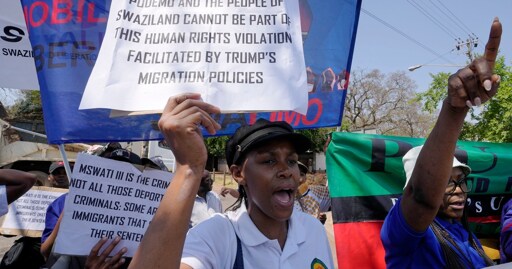Eswatini, the landlocked nation formerly known as Swaziland, is Africa’s last remaining absolute monarchy. It is the kind of place where King Mswati III—who took the throne as an 18-year-old four decades ago—can warn in a speech in 2023 that nobody should “complain if mercenaries kill” political activists. When one of the country’s leading human rights lawyers is murdered only hours later, the king’s representatives will suggest there is no connection. No one will be punished.
In other words, Eswatini is just the kind of country—small, untroubled by democracy, and presumably eager to avoid a superpower’s wrath—with which the Trump administration has been eager to do business.
In May, officials from the US and Eswatini signed a deal that allows the Trump administration to deport people from all over the world to the African nation. A copy of the arrangement I reviewed shows that the United States has agreed to pay Eswatini $5.1 million to take in up to 160 so-called “third country nationals”—immigrants who came to the US with no ties to the country to which they are being deported.
Slave trade is what that sounds like
Unironically how the early slave trade began. African “Pawns” - human hostages operating as collateral for family debt obligations - were traded to European Trans-Atlantic shipping companies in exchange for period-modern weaponry and other industrial goods. The captives are moved to agricultural plantations in the southern states and “permanently indentured” on contractual terms they can’t void in their lifetimes. Then their children legally inherit the debt and spend a lifetime in bondage.
Safe to assume those 160 captives will be forced into menial labor positions and abhorrent living conditions, very likely to generate the raw materials craved by industrial Global North businesses. And you can guarantee that the $5.1M we’re paying Eswatini’s leadership, plus profit from forced labor, comes right back to the Imperial Core in the form of high end western retail consumer spending.
Either that or just plain ransom.





